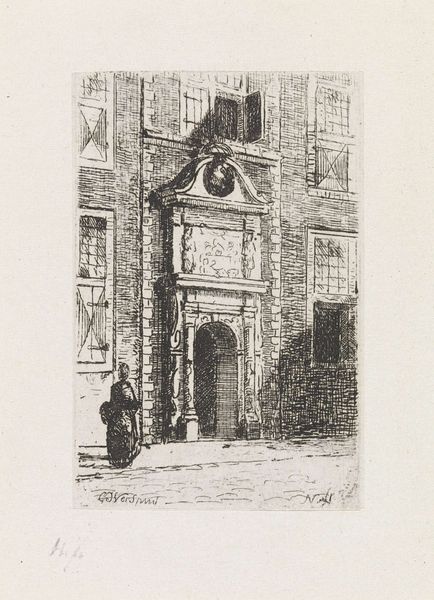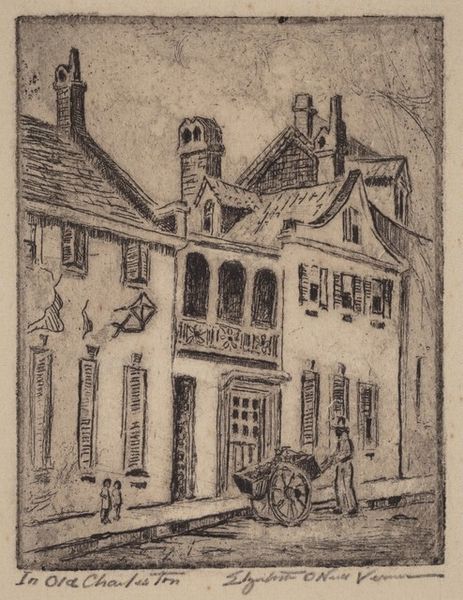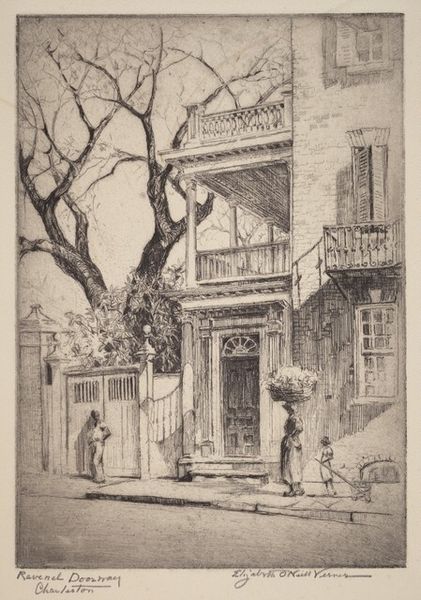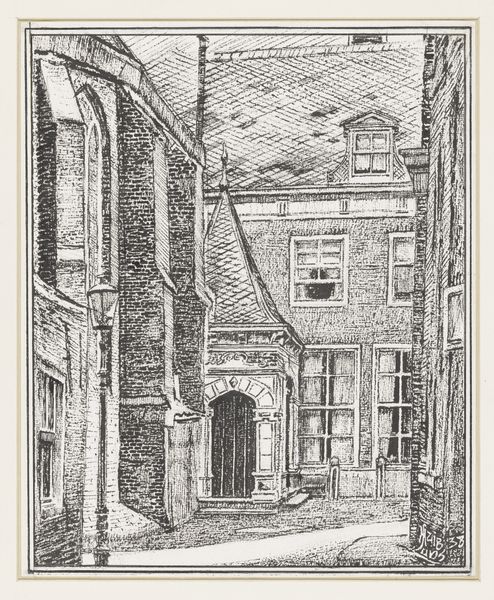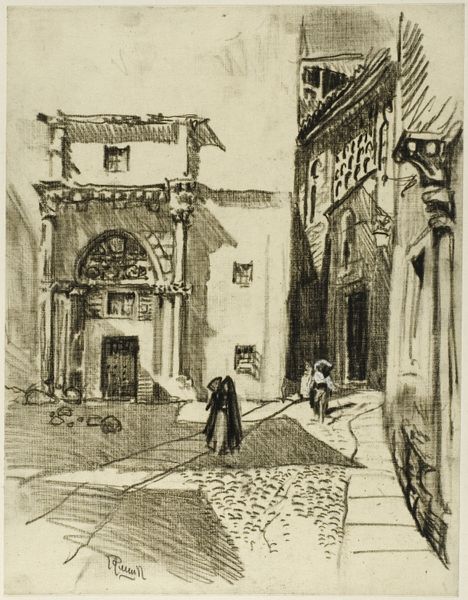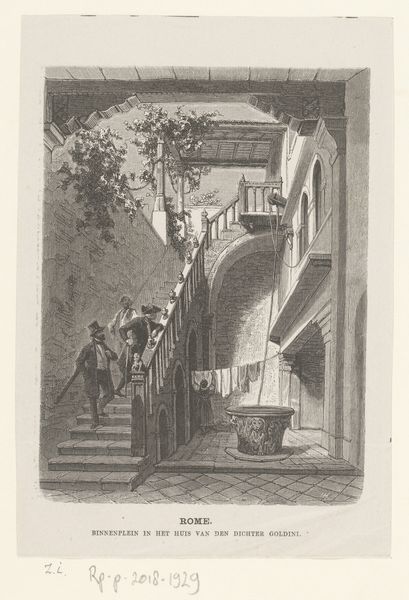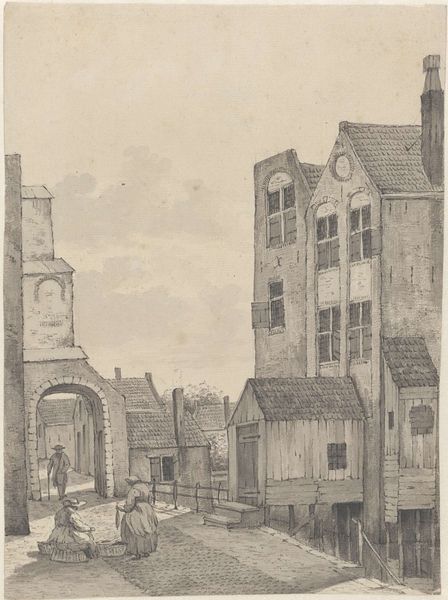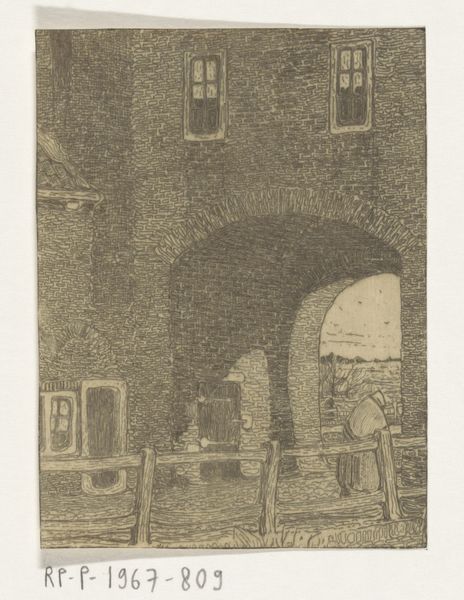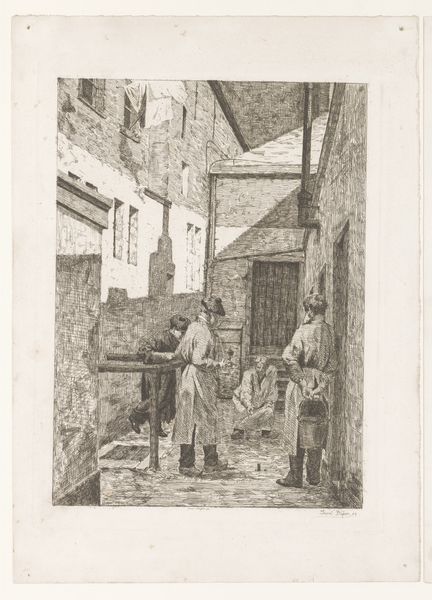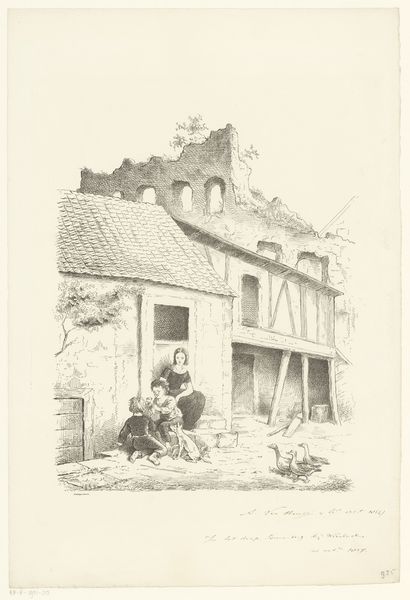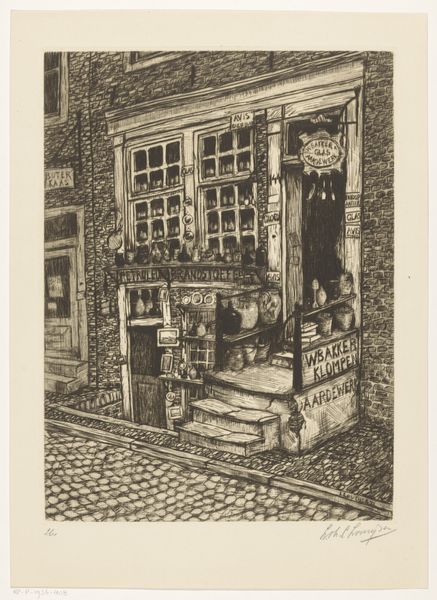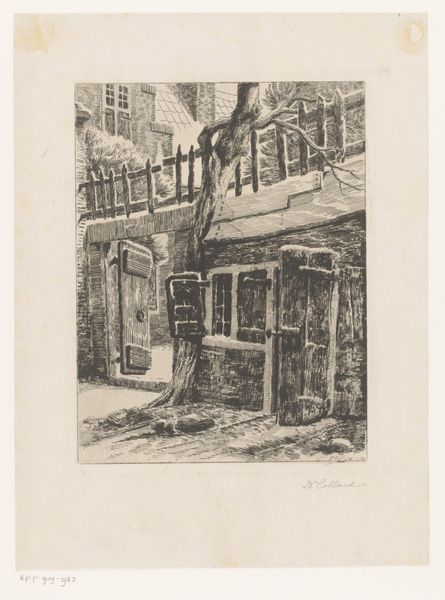
drawing, paper, ink, pen
#
drawing
#
aged paper
#
light pencil work
#
quirky sketch
#
dutch-golden-age
#
pencil sketch
#
old engraving style
#
sketch book
#
paper
#
personal sketchbook
#
ink
#
sketchwork
#
pen-ink sketch
#
sketchbook drawing
#
pen
#
cityscape
#
genre-painting
#
realism
Dimensions: height 129 mm, width 108 mm
Copyright: Rijks Museum: Open Domain
Isaac Weissenbruch made this drawing of two men on a bench in front of a house at an unknown date. It shows us a scene from ordinary life. Weissenbruch was part of the Hague School, a group of Dutch artists active in the second half of the 19th century. They aimed to depict everyday scenes and landscapes, a shift away from the grand historical paintings favored by earlier generations. This artistic choice reflected a broader cultural movement towards realism and a focus on the lives of ordinary people. The Netherlands in the 19th century was undergoing significant social and economic changes, and art became a way to explore the nation's identity. Weissenbruch and his peers helped to democratize art by representing the lives of ordinary people in a way that hadn't been done before. To understand this work better, look to social histories of 19th-century Netherlands. What did it mean to represent the lives of everyday people? How did this break with academic tradition? Understanding the context of Weissenbruch's time helps us appreciate the cultural importance of this seemingly simple image.
Comments
No comments
Be the first to comment and join the conversation on the ultimate creative platform.

